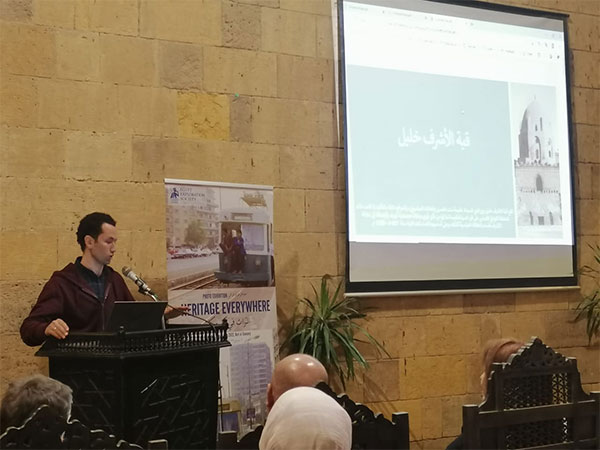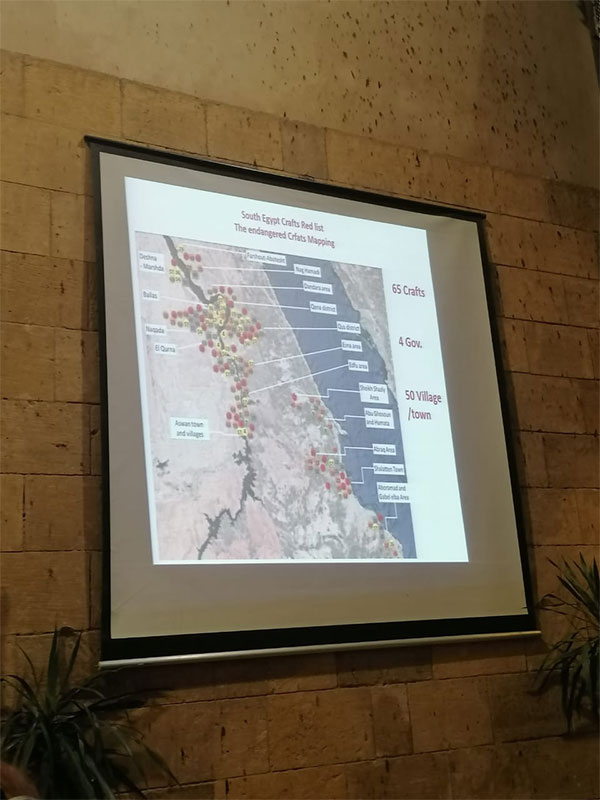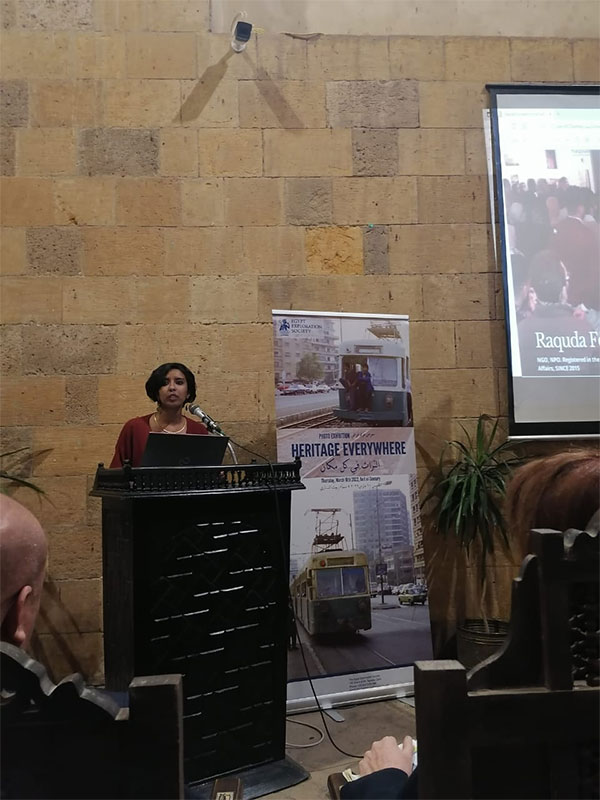The exhibition is the result of joint efforts between EES and Bibliotheca Alexandrina.
The event was organized by Egyptologist Fatma Keshk who is the grant administrator of EES’s Heritage At Risk Grant with the support of the EES team.
Among attendees was engineer Haitham Mohieb, director of Beit Al-Sennary, Dr. Campbell Price, the chair of trustees of EES, Ms. Elizabeth White, director of British Council Egypt on behalf of The British Ambassador to Egypt, and Dr. Osama Talaat, Head of the Islamic, Coptic and Jewish Antiquities Sector at the Supreme Council of Antiquities.
"Egypt Exploration Society has always been dedicated to support and promote cultural heritage of ancient Egypt. However, the society has always been keen to connect the ancient Egyptian heritage with modern Egypt. I personally believe that there is no difference between them and their history is part of the same unit; that was one of the reasons we launched such a fund," noted Fatma Keshk in her speech introducing the five winning projects.
Al-Ashraf Khalil Dome


The mausoleum of Al-Ashraf Khalil was built in 687 AH / 1288 AD by Al-Sultan Al-Ashraf Salah El-Din Khalil Ibn Qalawun in the Mamluk era (1250-1517 AD)
“We picked this dome specifically because it is the only Mamluk Baharia Dome that has been kept in its original status,” explained Moaz Lafif, the architect whose project was awarded the grant to document the dome.
Lafif put his passion for heritage into practice about a year ago when he launched a local campaign to clean up the forgotten heritage monuments of Cairo.
“After a while, the idea started to formulate and become much deeper than just cleaning up monuments, and after attaining my college degree, I applied for this grant,” explained Lafif.
Egyptian Handicrafts Under Threat

The second project, which documents threatened handicrafts in Upper Egypt, is the brain child of Usama Ghazali, a heritage researcher who was born and raised in Qena governorate.
“I think we have a tendency to summarize Egyptian heritage in ancient Egypt and Egypt in Cairo, so I joined a group of friends and we decided to focus on the handicrafts as an intro to preserving heritage. We documented 256 handicrafts in 550 villages in addition to various cultural societies like Al Basharia, Al Abbabda tribes, Siwa and Sinai, which reflected cultural diversity,” explained Usama Ghazali.
Ghazali has been following his passion for heritage since 2007 when he created Yadawya, an online store for fair-trade Egyptian handmade gifts and craft. He has also promoted the revival of handicrafts in Egypt through various workshops.
Salam Tram Project

The third awarded project is quite novel. The Salam Tram Project is an archive of the local history of tram lines in Cairo by SARD group (Shubra Archives).
The idea of creating an archive for the local districts came to Mina Ibrahim when he was visiting Italy and saw lots of local districts in Rome have allocated a space to document and exhibit the intangible heritage of their neighbourhoods.
Adopting the same line of thought, Mina Ibrahim reused his old family apartment in the ancient district of Shubra, Cairo and transformed it into The Shubra Archive. However, the idea grew to include all heritage districts of Cairo and hence came the starting point, which is the Salam Tram Project, that documents the history of the tramways in Cairo.
Industrial Heritage

The fourth awarded project puts industrial heritage gem into the limelight by documenting the Khatatba canal irrigation complex in the Menoufiya governorate, which was built during the Mohamed Ali era (1805-1848 AD)
This effort is being led by Sandra Zaki, Amr Mohamed and professor Gamal Fathy.
Without the work of this team, much of Egypt’s early industrial heritage, like this complex, is at risk of being lost as it is swept aside in favour of more modern replacements.
Alexandria’s Fish Market

The documentation of Alexandria’s Fish Markets was the fifth awarded project, given to the Raquda Heritage Foundation.
The event ended on a nostalgic note, as the guest exhibitor Ziad Morsy shared his individual documentation of the ruins of El-Qabbary railway station in Alexandria, which was demolished last summer.
His documentation reflected on the world history of railways and how the idea of railways became known to Egypt through Robert Stevenson, who is the son of George Stevenson, the inventor of the first steam locomotive in the world. Robert Stevenson launched the first railway track in Egypt, between Cairo and Alexandria in 1852.


Short link: